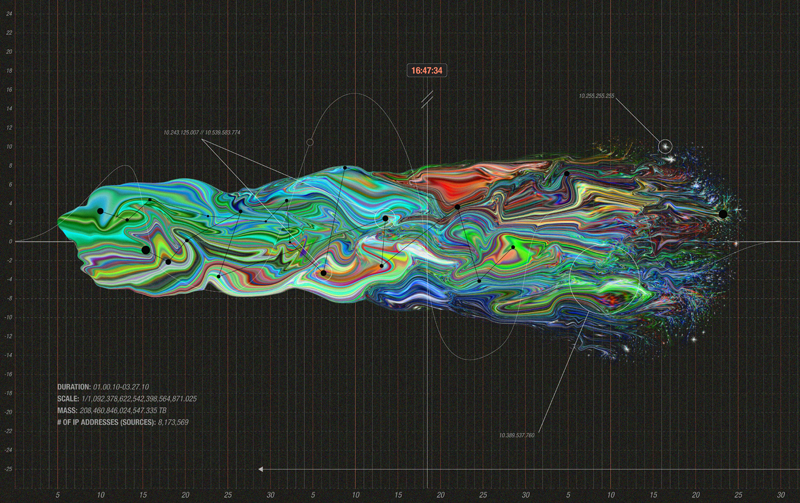[portfolio_slideshow]
The internet is a digital universe, and the Web is a media product of that universe – a complex tail of data and content which streams out of the structure of the internet as it exists over time, at once archiving its past and performing its present. This distillation of the digital universe into a singular, though ongoing, media event is what I refer to (with tongue slightly in cheek) as the God Feed. More specifically, the God Feed is a fantastical idea about the potential for omniscience in a digital universe. It posits the existence of a feed that contains everything, delivering every tweet, search, video, post, and comment instantaneously into a single place, where all would be seamlessly ordered according to time.
It is not a difficult stretch to think of much of the activity of the Web as having religious or cosmological implications. Where once we turned to clergy, or to God himself, we now, through our activity on the Web, confess daily our hopes, concerns, confusions, and vices. It’s all recorded, on a vast network of invisible servers. As the internet expands its reach, and as the Web more comprehensively performs every minutia of our lives, the God Feed would ever more completely include absolutely everything about us and our surroundings, placing those with access to it in a position of digital omniscience. This omniscience is the goal, stated or not, of the giants of the internet world, as well as the advertising markets for which they so fiercely compete. To know, in real time, what we desire and how we behave is the holy grail of the internet quest, and its a grail that is already being sipped from. Of course, the real catch lies in “knowing.” It is one thing to create an infrastructure for realizing the God Feed, which is already more or less in place, but it is quite another to make sense of it once you’ve got it.

The image above is a fictitious look at the problem of making sense of a God Feed. It poses the questions: How would you curate, filter, visualize, navigate, and consume something as overwhelming as this? What metrics would you use to quantify it, and how would you chart its change over time? Even as it is, without the existence of such a feed, we wrestle daily with the problem of having too much information/content. Our feeds and inboxes pile up as we bump against the limits of what time and cognition will allow. And yet we long to be a part of it all, to be connected to and participate in the bigger picture, and to be kept abreast of every development in our specific areas of interest. Amazing new tools are developed near daily to help us do just that, but there is much territory that seems to be neglected. The projects documented on this site probe some of this territory. Using the God Feed as a starting place, they explore different ways we might capture, render, and relate to the performance of the Web.
Note: Original internet map generated by the the Opte Project.